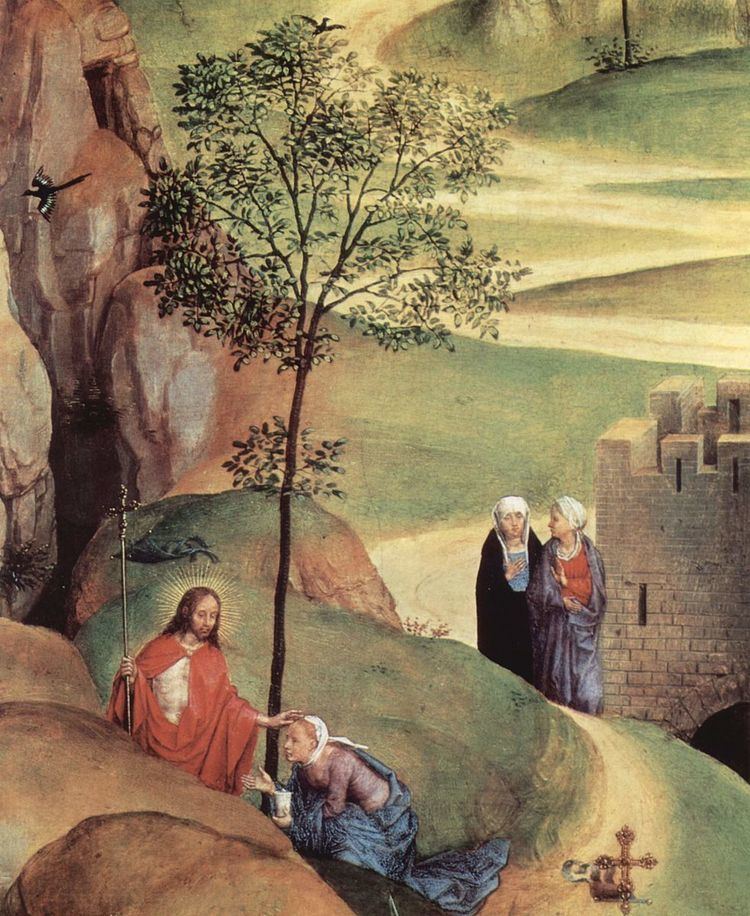 | ||
Matthew 28:10 is the tenth verse of the twenty-eighth chapter of the Gospel of Matthew in the New Testament. This verse is part of the resurrection narrative. Mary Magdalene and "the other Mary" are leaving the empty tomb of Jesus after encountering an angel, and in this verse they encounter the risen Jesus.
The original Koine Greek, according to Westcott and Hort, reads:
τοτε λεγει αυταις ο ιησους μη φοβεισθε υπαγετε απαγγειλατε τοιςαδελφοις μου ινα απελθωσιν εις την γαλιλαιαν κακει με οψονταιIn the King James Version of the Bible it is translated as:
Then said Jesus unto them, Be not afraid: go tell my brethrenthat they go into Galilee, and there shall they see me.The modern World English Bible translates the passage as:
Then Jesus said to them, "Don’t be afraid. Go tell my brothersthat they should go into Galilee, and there they will see me."This verse is very similar to Matthew 28:7, with the deliverer changed from an angel to Jesus. This verse might be a creation of the author of Matthew, derived from 28:7. The phrase "to my brothers" is very unusual and also appears at John 20:17, and there may be shared source used by the two writers.
No new information is included in this message that was not present at 28:7. Nolland notes that the importance is not the message, but rather who gives it. Jesus here serves as the second witness providing proof of the resurrection. The verse is not an exact copy of 20:7, Nolland considers the changes simply alterations to prevent the reader getting bored by an exact repetition of the earlier line. R.T. France, disagrees, and considers calling the disciples brothers and a direct command to go to Galilee important differences over 28:7. Gundry agrees that there is no new content in this verse, but he disagrees that this is a creation of Matthew based on the angel scene. Rather he feels that this content comes originally from a now lost ending to Mark 16. While the Gospel of Matthew has no need for this passage, Gundry believes Mark could not have ended at 8, with the women silent about what they had seen. A second event would need to occur to break their silence, and Gundry feels that this section of Matthew is based on that content.
Nolland considers the "to my brothers" to be a "striking innovation". It shows that Jesus stands with the disciples, even though they deserted him, and shows that Jesus considers the relationship unruptured by the events of the crucifixion.. Schweizer notes that in the original Greek, the word translated as brothers is gender neutral and can refer to both Jesus' male a female followers. Jesus has referred to brothers several other times in Matthew, notably at 12:46, 12:49, 12:55, and 28:16
This is the final mention of the women in the gospel, and there is no report of the message being delivered. That the disciples are present in Galilee at Matthew 28:16, indicates that the message was delivered.
